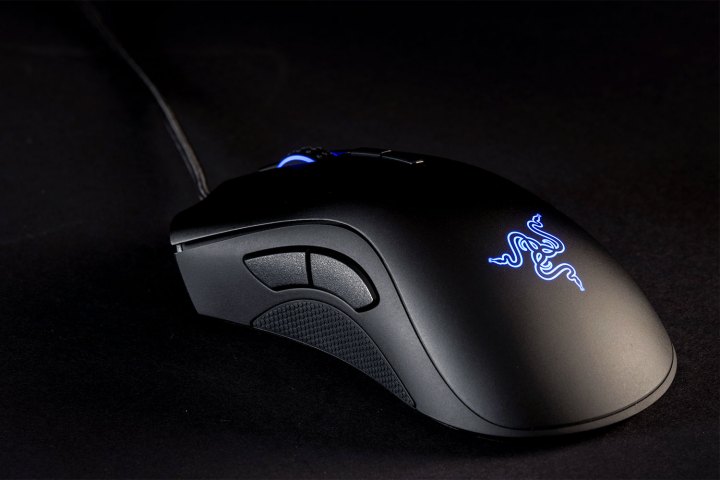
If that sounds an awful lot like the Optimus keyboard of yore, don’t worry, this one appears to take a different path. Filed back in August and published on January 19, the application is for an “optically transmissive key assembly for display-capable keyboards, keypads, and other user input devices.”
Instead of having a tiny OLED screen for each key, like the Optimus keyboard, Razer’s patent suggests that a single display would be embedded beneath the keys or body of a mouse, which would be optically transmissive, or transparent.

In the accompanying drawings, Razer gives up a few examples of how it might be used in practice. Seen here, an LCD panel lies beneath an optically transmissive layer on an individual key, or optically transmissive areas on, say, a gaming mouse.
“A significant drawback or limitation associated with conventional keyboards is the static information, for instance static letters and numbers, that is displayed by individual keys of said keyboards,” the patent reads. “Unlike touchscreen interfaces, existing keyboards do not provide a user with dynamically changing interface via which a user can introduce inputs, instructions, and/or commands.”
So, it appears that Razer aims to combine the customizable, interactive, and dynamic aspects of the touchscreen interfaces we all know and love, with the tactile feel of a mechanical keyboard or mouse. In another image included in the patent application, we can see a crude example of how this might work on a gaming mouse.

A display beneath the body of the mouse enables the device to have a customizable and interactive interface. Or as the Razer patent application describes it, “a display screen configured to output variable image content” which may or may not be a rigid display screen, or a flexible polymer-based screen.
It’s a very interesting patent application, and it goes on to describe some really innovative uses for OLED and LCD screens on, presumably, gaming peripherals. Still, don’t get too excited, this is just a patent application and the devices it describes could be months or even years away from hitting store shelves.


